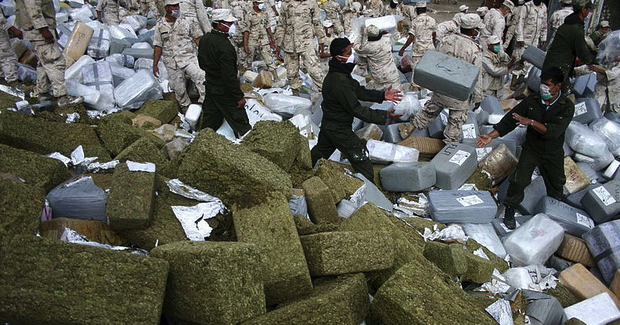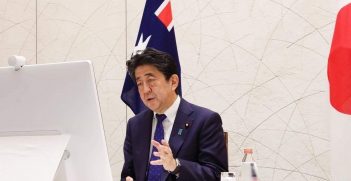The Mexican Drug Trade and Australia

Mexican drug cartels are responsible for a lot of the drug trade across the Asia-Pacific and into Australia. They are at the centre of a dark network that includes multiple foreign and domestic actors. It is a transnational network of organised crime that is becoming increasingly large and sophisticated. These facts present significant challenges for Australian policymakers when deciding on the best course of action.
Over the past few decades, the schemes of many transnational organised crime groups have developed into sophisticated networks with an overlapping profit-driven rationale. They are growing in size, ambition, scope and hazard. They have also increasingly taken on a highly adaptive transnational dimension to their planning, financing and coordination activities.
Partly due to rapid developments in travel, technology and communications, steps in money laundering techniques have become increasingly deceptive. Drug smugglers are also no longer limited to traditional geographical locations in which to acquire assets to conduct criminal business activities.
In particular, the emergence of Mexican drug cartels—with webs of affiliations across the Asia-Pacific region—presents significant policymaking and law enforcement challenges for Australian officials.
Interestingly, some critics have argued that a shift in priorities since 9/11 to fixate on terrorism has left significant gaps in both multisource investigation and intelligence related to the evolution of these major transnational organised crime networks.
The rise of Mexican cartels
Mexican drug cartels should be seen as a well organised, multi-dimensional, ruthless global business.
Mexican cartels have drastically expanded their production and distribution of drugs in recent years making the Asia-Pacific a lucrative as well as a logical region in which to extend and apply their trade and operations—often reinforced by maintaining a culture of fear and violence.
Drug trafficking organisations have operated in Mexico for over 100 years. During the 20th century, many of these groups established themselves as the key suppliers of marijuana and heroin. Throughout Mexico’s volatile period of one-party rule (1929–2000) via the Institutional Revolutionary Party (PRI), various criminal groupings acquired significant wealth and power.
Critically, they were able to consolidate their illicit networks, safe havens and transit routes by spreading corruption within government and police circles and taking advantage of inadequate border security, lawlessness and broader instability.
Today, Mexico remains at the centre of the global drug trade.
The Pacific maritime corridor
One key aspect that should be recognised first and foremost is that this threat to Australia’s national security is not posed by one particular boss or group such as the powerful Sinaloa cartel.
Rather, it is a threat posed by habitually rival Mexican cartels and an overarching ‘dark-network’ that spans the Asia-Pacific and includes multiple foreign and domestic actors as well as corridors.
As such, many illicit drugs are not directly smuggled from Mexico to Australia. For example, the majority of cocaine entering Australia is channelled through third countries in the Pacific, passing through hubs such as in New Caledonia, Tonga, Vanuatu and Fiji.
In 2013, this was evidenced by several large seizures including the capture of a luxury yacht that netted 750kg of cocaine bound for the Australian market. Indeed, with increased US surveillance on the Mexican border alongside airports worldwide having tightened their security settings, the US coast guard has noted “…that the rise in cocaine trafficking in the Pacific corresponded with a 66 per cent drop in cocaine trafficking on land”.
So with the growth of the Asia-Pacific maritime corridor, it will remain crucial that policymakers act to implement strategies that concentrate on the borderless nature of crime, how law enforcement agencies cooperate to deal with drug supply chains in an international context, and best practice in areas like maritime interdiction and criminal financial deterrence.
The rise of dark networks
Yet identifying and fighting such intermingled threat actors and entrepreneurial criminal organisations creates many difficult challenges for Australian policymakers when deciding on the best course of multi-jurisdictional action.
A variety of practical considerations from cost effectiveness, to issues regarding sovereignty to criminal infiltration of law enforcement, to the time intensive nature of broad-based surveillance approaches (that do not necessarily produce instant results) all remain central concerns in the steps towards the installation of best practice policy formulation.
Additionally, a bulk of law enforcement in Australia continues to spotlight only single modes of trafficking or drug product. But Mexican cartels are now largely poly-drug organisations, who traffic items like cocaine, heroin, crystal methamphetamine and marijuana. Furthermore, they have begun to systematically expand their operations to other areas such as human smuggling, extortion and kidnapping.
And in addition to items like cocaine, the synthetic drugs market has become much more lucrative and operationally complex due to its interconnectivity with other regions and countries, like China.
For some, this extended poly-drug trafficking has been a “deliberate modus operandi” to allow the employment of these diverse networks to be more resilient and profitable.
Exposing the global drug trade
The use of forward and backward linkages, criminal facilitators in many countries and assorted smuggling routes and tactics means that the business models of multiple Mexican cartel groups are not a stand-alone or static movement.
Problematically, Australia has also continued to signal that it has a growing appetite for consuming drugs.
Overall, the globalisation of crime has meant that nation states faced with identifying and confronting the threats that are posed by transnational organised crime must strengthen their ability to map and coordinate investigations and law enforcement techniques in efforts to weaken cartels and target critical points of the smuggling chain.
This must include steps to develop a greater organisational flexibility, acting to strengthen intelligence collection, rethinking of how border protection can be best prioritised and continuing to work with international partners in developing effective frameworks to tackle joint challenges such as reducing the global supply of (and demand for) illegal drugs.
Dr Daniel Baldino is a senior lecturer and discipline head of the Politics and International Relations program at the University of Notre Dame.
Dr Anthea McCarthy-Jones is assistant professor in the School of Government & Policy at the University of Canberra.
This article is published under a Creative Commons Licence and may be republished with attribution.
Hidden Power: Organised Crime in International Politics





